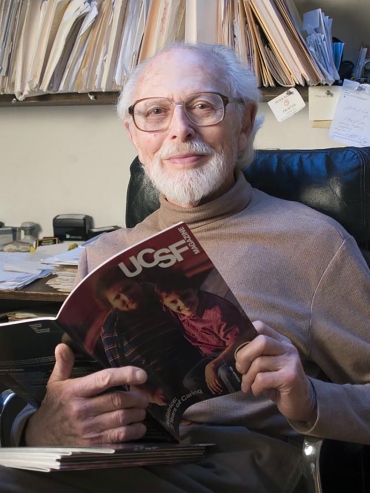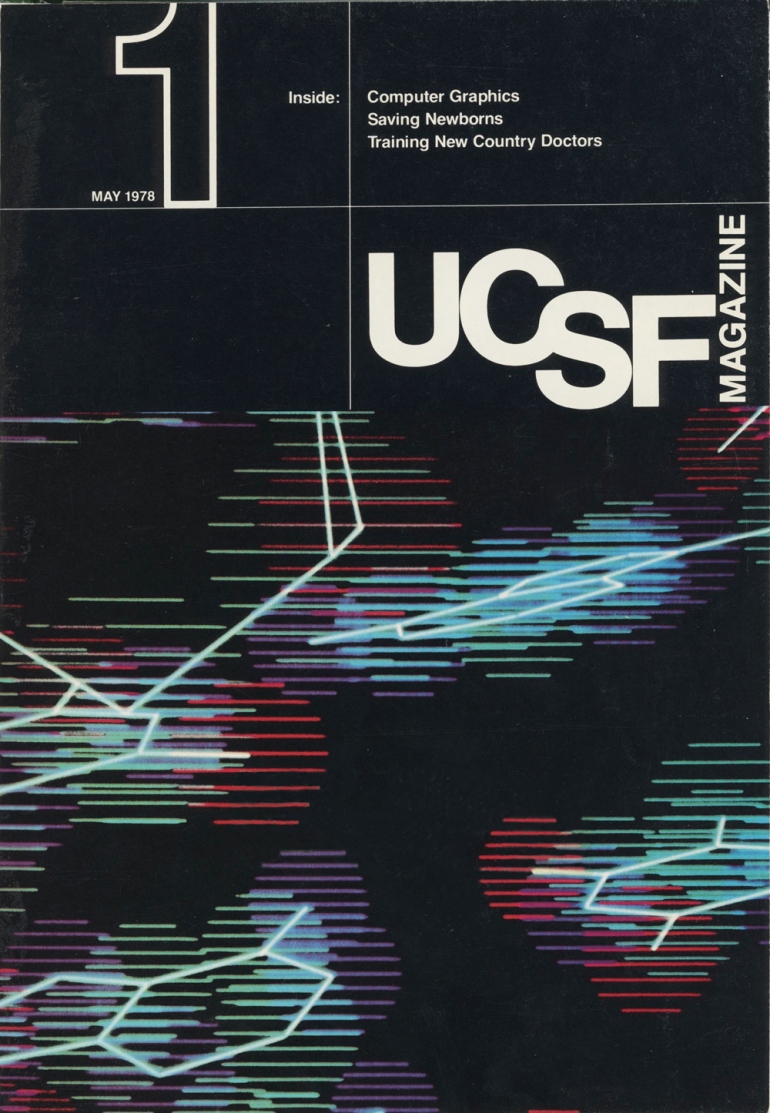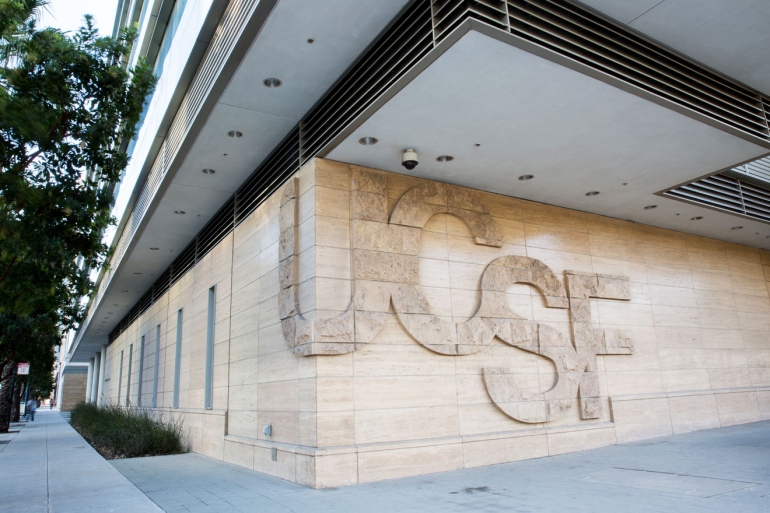Henry Wachs, Award-Winning Creator of the UCSF Logo, Dies at 102

Henry Wachs, famed Bay Area graphic designer and creator of the original logo for UC San Francisco in the 1970s, died on Dec. 21. He was 102.
Wachs also served as the freelance design and art director of UCSF Magazine from 1978 to 1993, a time marked by Wachs’ bold and dynamic use of typefaces, large photographs and Mondrian-like blocks of color. During his tenure, UCSF Magazine, the first publication of its kind to focus on popularizing university biomedical research, won more than a dozen national design and editorial awards.
Born in Prussia on July 17, 1916, Wachs was trained in pre-World War II Berlin as a typesetter and graphic designer. He was deeply influenced by 1920s Constructivism and by Germany’s Bauhaus movement, which aimed to unite fine art and functional design.
Anti-Semitic regulations and the growing Nazi menace drove Wachs from Berlin in 1938. He arrived in San Francisco that same year and was soon hired to design guide books for the 1939 Golden Gate International Exposition on Treasure Island.
With his German-accented English, professorial pose, love of conversation, and encyclopedic knowledge of typography and art, Wachs became an affable and well-known fixture in the graphic design and advertising worlds of post-war San Francisco.
In 1968, Wachs created the first “MZ” block logo for Mount Zion Hospital. His partnership with Mount Zion’s director of public information, Michela Reichman, who subsequently became UCSF assistant chancellor of communications, made him the logical choice for the logo assignment at UCSF a decade later.
Wachs often recalled the complexity of his UCSF assignment, which required that he clarify a history of evolving names and identities that had begun in 1873 when the campus was known as the Affiliated Colleges of the University of California. In 1970, with its official renaming as the University of California, San Francisco, the institution faced new identity hurdles: The University of San Francisco, San Francisco State University and UC Berkeley were already well-established names in the public mind.
Wachs’ solution was to create a logo that was politically astute, distinct and bold enough to capture the energy of an institution that in the early ’70s was bursting with scientific ambition. His now-classic, stairstep, UCSF logo (originally set in the typeface known as Helvetica Bold) was a monogram that offered a nod to hierarchy (with UC on the top) and a bow to the distinction of the San Francisco campus (with SF on the bottom). The Helvetica typeface was sturdy, strong and modern; yet the sinuousness of the letters, particularly the fusion of the “C” and the “S”, suggested that UCSF was on the move.
The logo first appeared in 1978 on a UCSF Medical Center fundraising publication, as well as on the first issue of UCSF Magazine, and since has become one of the most visible representations of UCSF. In 2014, as the University engaged in a refresh of its visual brand identity, it considered an overhaul to UCSF’s logo; but stakeholders across UCSF gravitated back to Wachs’ mark that has been such a distinct part of its visual story for decades.


“The UCSF logo has stood the test of time,” said Barbara J. French, vice chancellor for Strategic Communications and University Relations. “For over 40 years, it’s been an enduring and striking part of our identity, retaining strength as communications transitioned to digital platforms. We are grateful to Mr. Wachs for all he contributed to UCSF.”
Wachs, whose many other design credits include early iterations of BankAmericard, the forerunner of Visa, was a long-time resident of Mill Valley.